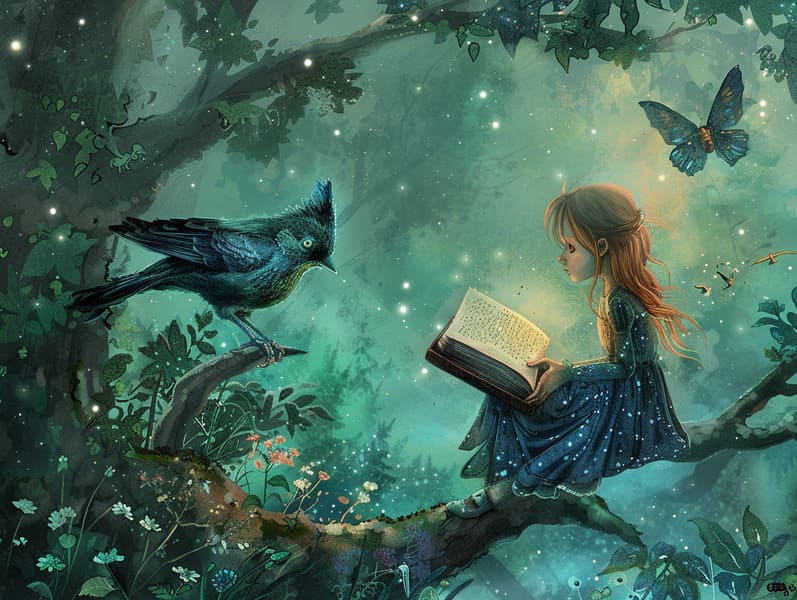Uncovering the Past of Ancient Fairy Tales and Their Everlasting Appeal.
Uncovering the Past of Ancient Fairy Tales and Their Everlasting Appeal.
Blog Article

Vintage fairy tales have long histories. These stories have been transmitted from one generation to the next millennia before they were ever put on paper. They were born from a variety of cultures, including Eastern traditions. They were initially passed along among grown-ups, often carrying themes and messages reflective of the societal norms and beliefs of the time.
Jacob and Wilhelm Grimm, Jacob and Wilhelm Grimm, were among the first to compile and publish many of these beloved narratives. Their compilation, "Grimm's Story Collection," included classics like "Cinder Maid," "The Story of Hansel and Gretel," and "Snow White," which have since become classics in the world of children's fairy tales. Similarly, the Danish author's enchanting narratives, such as "The Story of the Little Mermaid," and "The Duckling that Could," have enchanted hearts worldwide, securing their place in the pantheon of timeless fairy tales.
Even though they are old, traditional fairy tales remain as impactful as ever, especially as children's night stories. These whimsical stories are now available in diverse formats, including vividly illustrated books, magical animations, and online fairy tales.
Their ongoing significance can be connected to several captivating elements:
Significant Morals: Old fairy tales often share important moral lessons. Fairy tales like "The Shepherd Boy and the Wolf" teach the value of being truthful, while "The Story of the Tortoise and the Hare" demonstrate the benefits of persistence and unpretentiousness. These stories offer young readers clear distinctions between moral and immoral, developing their moral compass in a kind yet impactful way.
Compassion and Insight: Old fairy tales frequently present figures facing challenges and problems, fostering kids to comprehend with their struggles and boost their triumphs. For instance, "The Story of Beauty and the Beast" shows us the virtue of appreciating inner worth to acknowledge the true character of a being, nurturing insight and awareness.
Cultural Comprehension: Many fairy tales are interwoven with the cultural contexts from which they blossomed. Reading these stories can provide captivating looks into different beliefs, promoting a sense of global awareness and appreciation.
Inventiveness and Imagination: The enchanted elements in timeless fairy tales—talking animals—encourage children’s dreams. These narratives guide readers to mythical realms, motivating imaginative thinking and a sense of magic that stays a lifetime.
Classic fairy tales are not only magical but also enlightening. They work as charming tools in cultivating various thinking and feeling skills in young readers. When fairy tales are narrated, they enhance language proficiency by showing new language and elaborate sentence structures. This practice also nurtures hearing perception and attentiveness, as young readers stay focused, anticipating to see what happens next.
Furthermore, talking about the themes and characters of ancient fairy tales can cultivate reasoning skills and intellectual skills. Children are instructed to recognize patterns, foresee events, and catch on to cause and effect. These reflections also support young readers utter their thoughts and feelings, boosting their emotional intelligence.
In today’s technological era, the presence of online storybooks has made these narratives more accessible than ever. Internet resources and mobile apps feature broad selections of classic fairy tales that can be perused or heard anytime, anywhere. Fairy tales read out loud are particularly widespread, presenting an captivating way for little ones to appreciate these magical stories. Audio stories and read-to-me stories guide characters and settings to life, often supported by charming soundtracks and background music that enrich the tale experience.
The unfading fascination of traditional fairy tales lies in their ability to change to modern days while sustaining their main lessons. Contemporary reinterpretations of these tales often feature more different protagonists and modern settings, making them relevant to today’s audience. However, the key lessons of fearlessness, kindness, and fairness remain unchanged, continuing to appeal to readers of all ages.
Ancient fairy tales also offer a sense of warmth and homeliness. They grant access to a orderly narrative with a straightforward beginning, middle, and end, often finishing with the termination of conflicts and the triumph of right over wrong. This uniformity can be solacing for kids, making known a sense of solidity in an inconstant world.
Classic fairy tales continue to enthrall and edify new generations, maintaining their grace and impact in modern society. As children's night stories, they put forth a perfect blend of fantasy and learning, advancing moral values, empathy, and creativity. The prevalence of web-based fairy tales and more info the widespread nature of fairy tales recited ratify that these classic tales remain accessible to new generations.
By perpetuating and passing on these narratives, we continue to value the rich tapestry of storytelling and cultural heritage. Whether you are browsing a colorful picture book, experiencing a web-based library, or listening to an audio story, the splendor of ancient fairy tales is always within reach. These tales teach us of the unwavering spell of stories and its ability to bond us across eras and regions.
Be it you are perusing a richly illustrated book, perusing a internet collection, or listening on an audiobook, the appeal of old fairy tales is always within reach.
These narratives reveal of the invariable strength of storytelling and its ability to link us across generations and cultures, making a tie that enchants and educates alike.